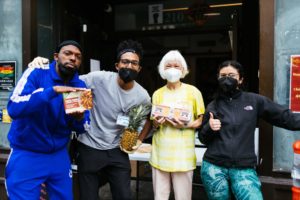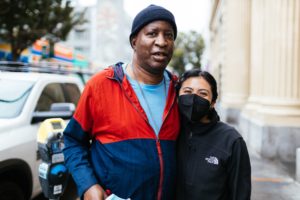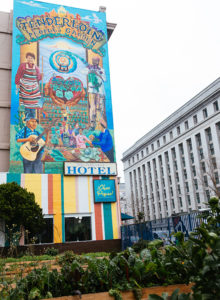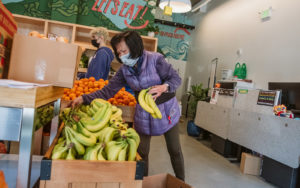Last week, President Biden set an audacious goal: eliminate food insecurity by 2030. His commitment came as he presided over the first White House Conference on Hunger, Nutrition, and Health in over 50 years.
“The energy in the room as the President of the United States of America made that commitment was kinetic,” said Tanis Crosby, executive director of the San Francisco-Marin Food Bank, who attended the conference. “To hear the reaction from people who are or have experienced food insecurity, advocates, teachers, academics, and more was profound.”
This is the commitment anti-hunger advocates and food banks have been demanding from the federal government for decades.
#FoodForAll means support for all
Ending hunger will take collective effort from all of us – including policymakers. Ahead of the White House Conference, we mobilized feedback from our community partners as part of the Feeding America Elevating Voices to End Hunger campaign. Their feedback, along with the voices of thousands of people experiencing food insecurity, other community-based organizations, and food banks nationwide helped formulate policy recommendations to the administration.
“Together with Feeding America, we uplifted voices to hear from people experiencing hunger. That, full stop, is our advocacy focus,” said Tanis. “We learn what works and where policy needs to improve from listening to people telling us what they need. That’s how we achieve our goal of ending food insecurity.”
The responses from the listening sessions were clear: we must address the high cost of housing, rising inflation, low wages, unaffordable healthcare, racism, and other institutionalized discrimination to end hunger. One attendee summed it up: “people need more freedom to enjoy a life where they’re not worried about the basics.”
The full Feeding America Elevating Voices to End Hunger report outlines the aspirations of our communities and anti-hunger policy recommendations—informed by people facing hunger prioritize dignity, increasing access, expanding opportunity and improving health.
It’s more than just food
When Tanis arrived at the White House Conference, she and other anti-hunger advocates asked for key policy recommendations grounded in what our communities said they needed. In breakout sessions, the Administration heard directly from advocates about the tangled web that holds people back, as advocates called for removing red tape and streamlining access to benefits people are entitled to.
We know hunger is not just a COVID-era problem, and it will take all of us to drive the change we need. The San Francisco-Marin Food Bank applauds the Biden-Harris Administration for recognizing the intersectionality of these challenges. “The acknowledgement that there is no single culprit behind food insecurity was heartening,” said Tanis.
This is our core philosophy: food is a basic human right, and we must address both the causes and consequences of food insecurity to end it. Doing so will require a multifaceted approach.
Looking forward
“The White House Conference was a once-in-a-generation opportunity for the federal government to take concrete action to address hunger and its root causes,” said Tanis. “The impacts of hunger are compounding and pervasive and they do not affect us all equally. This was a powerful opportunity for the Food Bank to speak directly to federal lawmakers and advocate for meaningful policy change.”
The last White House Conference on Hunger, Nutrition, and Health resulted in game-changing legislation that introduced key policies like SNAP (food stamps) nationwide. We’re optimistic the same will come from this year’s Conference.
Specifically, the Food Bank is advocating for:
- Protecting and strengthening SNAP (food stamps, called CalFresh in California). By far the most effective federal policy to end hunger, SNAP puts money for food directly into people’s pockets.
- Permanently expanding the Child Tax Credit to strengthen social safety nets for families.
- Increasing the minimum wage to offset skyrocketing income inequality and cost of living and adjusting eligibility guidelines for federal programs accordingly to avoid a “benefits cliff”.
- Protecting and strengthening The Emergency Food Assistance Program (TEFAP), which is a vital source of food support for food banks across the country.
- Improving access to federal food, human services, and health assistance programs such as SNAP, WIC, and Medicaid, so that eligible people aren’t missing out on vital benefits.
“In the end, it’s not about what happened at the Conference, but what we do next and how,” said Tanis. “Solutions co-created with communities that experience hunger are how we solve food insecurity. I’m looking forward to continuing that within San Francisco and Marin, and I’m excited to see meaningful federal change in the months and years ahead.”











 Partners like Meals on Wheels, as well as our own
Partners like Meals on Wheels, as well as our own 
Share